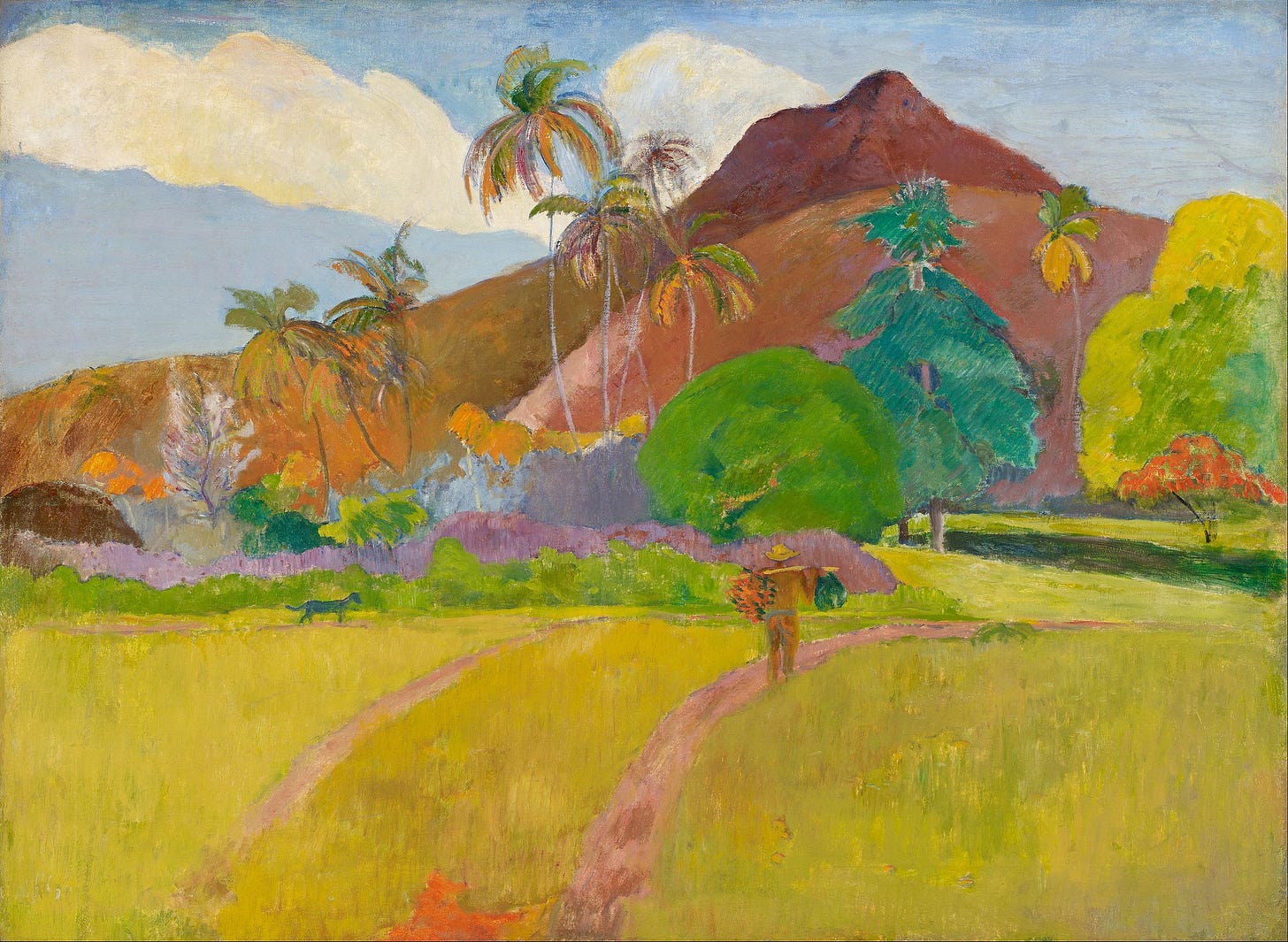"Mausoleum of the Warrior-Chief" by Herman Melville, 1842
"On all sides, as you approached this silent spot, you caught sight of the dead chief’s effigy, seated in the stern of a canoe."
Herman Melville’s first book, Typee, was based on his own experiences living with the Typee people on the island of Nuku Hiva of the Marquesas in the South Pacific.
In one of the most secluded portions of the valley, within a stone’s cast of Fayaway’s lake—for so I christened the scene of our island yachting—and hard by a growth of palms, which stood ranged in order along both banks of the stream, waving their green arms as if to do honour to its passage, was the mausoleum of a deceased warrior-chief. Like all the other edifices of any note, it was raised upon a small pi-pi of stones, which, being of unusual height, was a conspicuous object from a distance. A light thatching of bleached palmetto-leaves hung over it like a self-supported canopy; for it was not until you came very near that you saw it was supported by four slender columns of bamboo, rising at each corner to a little more than the height of a man. A clear area of a few yards surrounded the pi-pi, and was enclosed by four trunks of cocoa-nut trees, resting at the angles on massive blocks of stone. The place was sacred. The sign of the inscrutable Taboo was seen, in the shape of a mystic roll of white tappa, suspended by a twisted cord of the same material from the top of a slight pole planted within the enclosure. The sanctity of the spot appeared never to have been violated. The stillness of the grave was there, and the calm solitude around was beautiful and touching. The soft shadows of those lofty palm trees—I can see them now—hanging over the little temple, as if to keep out the intrusive sun.
On all sides, as you approached this silent spot, you caught sight of the dead chief’s effigy, seated in the stern of a canoe, which was raised on a light frame a few inches above the level of the pi-pi. The canoe was about seven feet in length; of a rich, dark-coloured wood, handsomely carved, and adorned in many places with variegated bindings of stained sinnate, into which were ingeniously wrought a number of sparkling sea-shells, and a belt of the same shells ran all round it. The body of the figure—of whatever material it might have been made—was effectually concealed in a heavy robe of brown tappa, revealing only the hands and head; the latter skillfully carved in wood, and surmounted by a superb arch of plumes. These plumes, in the subdued and gentle gales which found access to this sequestered spot, were never for one moment at rest, but kept nodding and waving over the chief’s brow. The long leaves of the palmetto dropped over the eaves, and through them you saw the warrior, holding his paddle with both hands in the act of rowing, leaning forward and inclining his head, as if eager to hurry on his voyage. Glaring at him forever, and face to face, was a polished human skull, which crowned the prow of the canoe. The spectral figurehead, reversed in its position, glancing backwards, seemed to mock the impatient attitude of the warrior....
Whenever, in the course of my rambles through the valley, I happened to be near the chief’s mausoleum, I always turned aside to visit it. The place had a peculiar charm for me; I hardly know why, but so it was. As I leaned over the railing and gazed upon the strange effigy, and watched the play of the feathery headdress, stirred by the same breeze which in low tones breathed amidst the lofty palm trees, I loved to yield myself up to the fanciful superstition of the islanders, and could almost believe that the grim warrior was bound heavenward. In this mood, when I turned to depart, I bade him, “God speed, and a pleasant voyage.” Ay, paddle away, brave chieftain, to the land of spirits! To the material eye thou makest but little progress, but with the eye of faith, I see thy canoe cleaving the bright waves, which die away on those dimly looming shores of Paradise.
From Typee by Herman Melville, 1846, available on Amazon*
Classic Travel Tales on Facebook
*As an Amazon Associate we earn a bit from qualifying Amazon purchases.
Image: Tahitian Landscape by Paul Gauguin, 1891, Minneapolis Museum of Art, public domain.



